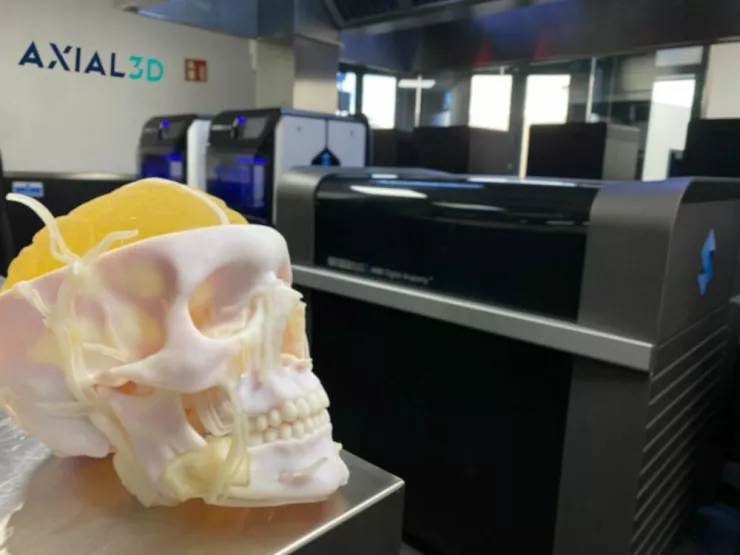The drive towards patient-specific treatment is accelerating as technological and medical advances open up the opportunity to deliver affordable, personalized care. This will take into account genomics and the individual’s biological, physiological and anatomical characteristics, and will include patient-specific implants.
In the future, the idea of using off-the-shelf surgical implants could become as anachronistic as using wooden legs as prosthetics.
But to bring patient-specific implants and associated surgical cutting guides into mainstream medicine, medtech companies will have to massively scale up the production of 3D electronic files (that can be viewed or printed), which requires a new approach to data segmentation.
Preparing for the increase in demand
The current segmentation process requires a hefty time and money investment involving expensive software plus many hours of a highly skilled medical professional’s time to manually create 3D electronic printable files. This is not only a poor use of resources, it also limits the number of 3D models that a hospital or other healthcare provider can access for pre-operative planning or for the production of patient-specific implants and cutting guides.
This is one of the reasons that just 1% of operations involving implants use patient-specific ones, and these are normally reserved for the most complex cases. But every patient that needs an implant deserves one that is tailor-made for them. The challenge is producing them rapidly and at an affordable price.
To do that, medtech companies need a way of rapidly and cost-effectively segmenting 2D DICOM data sets to create 3D electronic printable files. The solution is automated segmentation.
Axial3D’s Segmentation-as-a-Service™
Axial3D is the first company in the world to create a service that enables hospitals or medtech companies to upload 2D scans to an application that, using proprietary anatomical algorithms, instantly segments images and creates 3D printable files. These can be produced and delivered within a few hours*, meaning the service can be used for even the most time-critical emergency cases. Axial3D can process thousands of datasets simultaneously, so we can confidently meet the anticipated surge in demand from medtech companies.
Axial3D has one of the largest labeled MRI and CT scan database for 3D printing in the world, curated with proprietary machine learning. Our 3D print files are more accurate than manually created ones and are quality assured by our expert Medical Visualization Engineers.
The Axial3D patented platform is hosted in the cloud by Amazon Web Services. It is highly secure and fully supports applications that store, process and transmit sensitive health data in compliance with regulations such as HIPAA and FedRAMP and international standards.
Simple and cost-effective
Axial3D’s cloud-based segmentation-as-a-service requires no additional software or hardware; an internet-enabled phone, tablet or laptop is all that is required to upload the 2D files received from the hospital to the Axial3D platform. It’s cost-effective as there are no fixed annual or deployment costs; price is per use.
Innovative medtech companies worldwide are already using Axial3D’s segmentation-as-a-service™ to enable them to offer affordable, patient-specific implants and cutting guides that can be produced quickly.
As the demand for patient-specific implants and cutting guides surges, medtech companies will soon come under pressure to meet the increased market need. Make sure your company is prepared.
Contact us to find out how Axial3D’s segmentation-as-a-service™ can help you deliver patient-specific implants and cutting guides rapidly and cost-efficiently.



